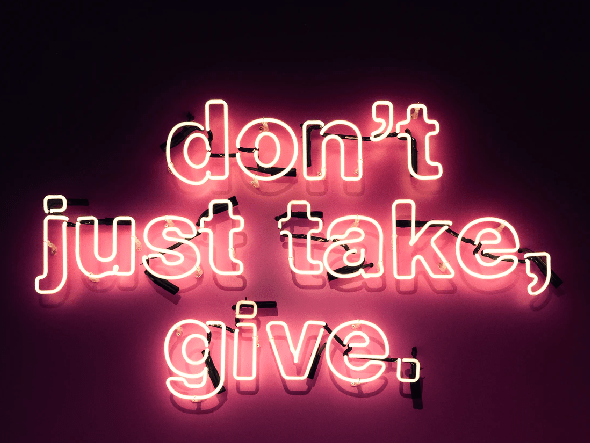Explore Guide
Digital PR is the process of obtaining links and brand placements on digital publications through earned media tactics.
Although digital PR has been around for some time, the modern interpretation is a fairly new one and started gaining ground more so in 2017 onwards. What digital PR is known as today was historically a mixture of Content Marketing and what people simply called Link Building. At one point, it was also described as ‘linkbait’ but we’ve come a long way since.
Digital PR bundles that mixture into one, creating a newer space that overlaps the two and separates itself from other forms of content creation (such as content with a ranking intent) and other link building tactics (link reclamation, broken link building, guest posting, etc.):
Digital PR Evolution
Digital PR is the natural evolution of traditional PR but focuses on the digital sphere and gaining placements in online publications. It’s also steeped in SEO, often with a focus on improving a website’s organic performance and being used to help a website become more competitive in organic search.
Practically speaking, digital PR is the process of creating news and working with journalists/writers, much like a PR would do, to gain brand mentions and features of their work online. Hence its closeness and why the two are often referenced along-side each other and compared. However, the bottom-line outcomes are very different and that also means the processes for achieving those features needs to be as well. This is why digital PR is much more akin to what SEOs know and understand than traditional PRs.
Whereas traditional PRs would typically be concerned with advertising rates, publication reach, demographics and a brand’s image, our world of digital PR uses a mixture of these vanity metrics (where needed) but ultimately all leads back to SEO and impact on organic traffic/revenue. Both disciplines can and do focus on digital media, but the outcomes are very different and demand for SEO performance alongside digital PR has continued to grow over the past few decades.
With that in mind, a digital PR must be very aware of what makes a website more competitive when it comes to link signals and what search engines value most. As it’s evolved to become the go-to method for achieving high quality links in top tier media, a digital PR must know how search engines view links, what makes them valuable, how they impact keyword ranking potential and what could be looked upon as spammy or manipulative. Google’s own guidelines here on Link Schemes is a great starting point for those interested.
Creating the News
At its core, digital PR is about utilising and creating stories that resonate with your target audience. In order to put your brand/client in front of your target audience en-masse, you need to create or work with existing stories that can be valuable to writers and influencers who your audience follow.
However, this is easier said than done (obviously!), as companies spend hundreds of thousands of pounds/dollars on single pieces of content, searching for just a handful of highly influential placements that make it all worth it.
The role of digital PR is to control this process as much as possible. As the authority in what resonates with digital audiences, crafting these stories through the creation of new or existing assets gives you the hook you’re looking for to establish a connection with a writer or influencer. They can then take your story and spread it to millions of potential readers, whilst also providing some key SEO benefits.
Journalists and influencers are busy people – many having told us that they receive upwards of 200 emails a day. Therefore standing out and gaining a writer’s attention falls at the heart of what digital PR is all about.
Digital PR is also a constantly evolving process. New forms of content are developed seemingly weekly, which means that when you are producing or influencing the production of content, you need to know what’s working, why it’s working and when to publish. This discipline puts you at the forefront of digital content.
The value of Digital PR
Although we’ll dive more into the impact of digital PR on SEO performance later on in this guide, a key part of anyone looking into what it is will ultimately also want to know what value it has and if they should do it.
As with any facet of SEO or building a brand, there are multiple cogs that have to work together. Digital PR is one of those cogs and it becomes increasingly more important depending on the niche you’re working in and how competitive the space is.
I won’t detail who but here’s the Google Search Console performance for a website we’ve been working with that has been investing in digital PR (alongside content creation and a solid technical SEO foundation) to build their website. Organic search performance is everything here and it’s why they invested in digital PR early on.
This is a massively competitive niche with some very big players in the field that most people would know the names of. However, this start-up has managed to trend upwards consistently and in huge leaps through building a solid foundation and establishing their domain as an authority in the space through digital PR.
The value of digital PR comes in various forms. Here’s a short list:
- Increase competitiveness of existing content in search engines
- Increase competitiveness of new content in search engines
- Drive more direct and referral traffic
- Improve chances of journalist pick-up in the future
- Gain brand awareness for your target audience and journalists
- Be seen as an authority or influencer within your topical niche
What a Digital PR Campaign Looks Like
A digital PR campaign can take various forms but every campaign has these key stages it goes through.
Ideation
First, you need an idea of what it is you are going to provide for journalists to talk about. The more unique, the better. Typically, the idea is something new that hasn’t been researched or visualised before but the news hook is the most important part of any campaign. When we are coming up with ideas at Root, it’s the question that separates the concepts we present to the ones we don’t.
A hook is the reason why. What is it about your idea that will make a journalist want to feature your story? This is usually delivered just like a journalist would when creating a headline.
Here’s some example campaigns and the hooks we used:
- Personal Spending Habits Through COVID-19 – ‘23% of people are eating more vegan meals to save money because of the pandemic’
- Life Without Bees – ‘Images show the impact on our favourite meals if bee decline continues’
- Secrets of Remote Workers – ‘People in larger companies report more positive outcomes from remote working compared to those in smaller companies’
Read more on campaign ideation on our section on Digital PR Campaign Ideating & How to Choose Between Them.
Production
Once you’ve completed ideation and know the campaign you’re going to be working on, the next step is producing the asset(s). This is the step that can vary quite dramatically, depending on what the idea is, the budget and how you’re planning to tackle it overall. This could end up being a simple press release with no visual assets or a fully blown interactive, using multiple assets and catering for a wider range of publications.
We’ve discussed this in another post called Build an Octopus, but assets play a huge role in how easy they are for people to use and creation is usually done involving research, design and, if needed, developers.
Research is always the starting point when it comes to production. This can take the form of secondary research, much like infographics used to, or you can create your own data-points from a survey. Separately, you may have your own data as part of your day-to-day business that people might want an insight to.
Design is then fundamental in helping to make your story engaging. It’s critical to avoid a design that is cumbersome and takes someone more than 5 seconds to understand. That’s why the Life Without Bees piece was so successful – with just a headline and one flick through an image, you got it.
Production is a large part of the process and can take from a few days to a few months to get right. This is the part of a campaign where briefs are being created for all groups involved, the key data and talking points are being refined to ensure pick-up and assets are being produced ensuring that talking points come through.
To read about what’s involved in producing a digital PR campaign, read our section on Digital PR Campaign Production.
Outreach
Lastly, once everything is signed off and ready to go, the story is emailed to journalists. Through outreach, there is a process of identifying the journalists who would most likely want to feature your story, sourcing their contact details and then communication.
Different digital PRs work in various ways here, and many tools exist to help speed up parts of this process, such as Gorkana’s media database for sourcing journalists, Hunter.io for finding email addresses, or Buzzstream for templating and scheduling emails.
There is a reason these tools exist and that is because outreach can take quite a bit of time to complete. It’s imperative to ensure the people are the right people to be contacting, the emails include all the assets they can potentially need to produce a story and that the hook used is correct for each individual journalist.
Separately, particularly with journalists at large publications, the first email is just the start. An on-going conversation can ensue, with plenty of back and forth checking through the methodology of your research, sourcing unique commentary they can use and in some cases, discussing exclusivity.
All in all, we’ve created digital PR campaigns that have taken 3 days from the start to achieving top tier media coverage, but that’s definitely not the norm. Typically, a campaign will take 1 to 3 month to publish and then outreach over the course of the final 1 or 2 months of a campaign. This of course depends on the asset(s) being produced.
For more information on the Outreach process, feel free to skip to our How To Outreach chapter.

